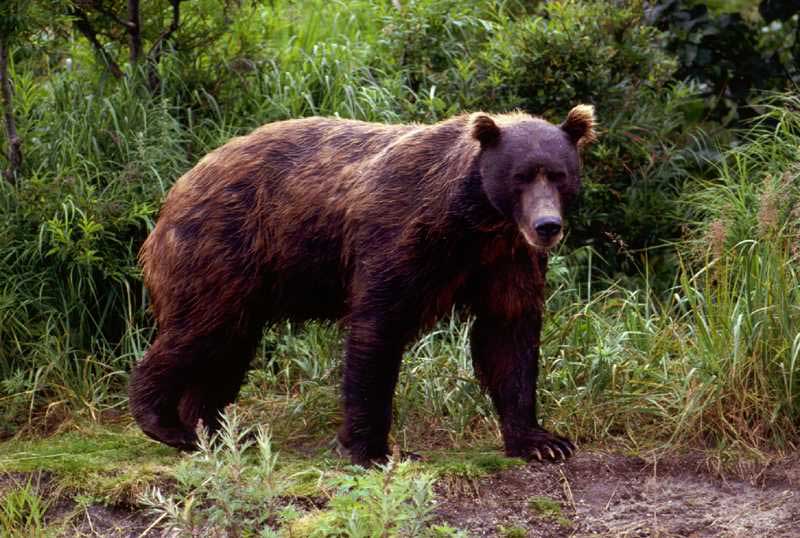Sunday, February 16, 2014
Post Revamp: Bergman's Bear
Most cryptids, no matter how many sightings they have, suffer a lack of physical evidence. Bergman's Bear has the opposite problem. It is mostly known from tangible remains -- a hide and skull examined in the 1920s. This bear has never been reliably reported, and only sketchy accoutns testify its existence. Supposedly, this creature lives in Russia's Kamchatka Peninsula, and resembles a grizzly in appearance. The main differences are its size and the quality of its hair.
Bergman's Bear is named for Sten Bergman -- the Swedish zoologist who examined its remains decades ago. He was instantly struck by the hide's unusual character. First of all, its hair was black -- darker than that of a normal Russian brown bear. The hair was also unusually short, and the pelt itself was massive. Bergman was also shown the creature's outsized skull, and some of its footprints -- which were over fourteen inches long. The naturalist believed he was dealing with a new subspecies. Scientifically, it has been named "Ursus arctos piscator" -- but it has gone down in history as "Bergman's Bear."
What is this mysterious animal? One theory, raised during a rare spurt of sightings, is that Bergman's Bear is a prehistoric relic called Arctodus. But this ancient bear only lived in North America, and had long, thin legs. Bergman's Bear sounds nothing like this -- in fact, a native name for the animal means "trousers pulled down." Does that sound lanky to you? A better theory is that Bergman was right -- and that his bear is a new brown bear subspecies.
That is, if the animal still exists. Kamchatka is sparsely inhabited, and during the Cold War was inaccessible due to military testing. At a glance, it seems an ideal cryptid hiding spot -- but the peninsula has not remained empty. It is regularly patrolled by bear hunters, few of whom report giant short-haired animals. Some say Bergman's Bear is extinct; were it present, it would surely be encountered. Others argue the bear never existed. Brown bears are variable in color, and some can appear black. They can also grow to incredible sizes -- with Kamchatka bears (Ursus arctos beringianus) being some of the largest. Was Bergman's Bear a simple misidentification? Until more remains are found, we cannot be sure.
Read more about Bergman's Bear:
http://www.cryptozoology.com/cryptids/godbear.php
http://www.examiner.com/article/cryptozoology-bergman-s-bear-of-the-kamchatka-peninsula-russia
http://www.unknownexplorers.com/bergmansbear.php
http://www.strangeark.com/bfr/historical/bille-mystery-bears.html
http://thelordgeekington.wordpress.com/2014/01/16/bergmans-hypersplitting/
Image (public domain, of a Kamchatka brown bear) from http://upload.wikimedia.org/wikipedia/commons/3/3f/Brown-bear-in-spring.jpg
Subscribe to:
Post Comments (Atom)

No comments:
Post a Comment